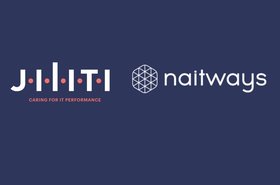That age-old advice against putting all of your proverbial eggs in one basket? Make sure you’re applying it to your cloud infrastructure decisions. Enterprise technology leaders face cloud hyperscalers aggressively positioning themselves as all-encompassing providers—offering infrastructure, platform services, and support under a single umbrella with the clear goal of forever becoming your exclusive technology partner.
While the lure of this consolidated approach can be attractive, it conceals significant longer-term costs and risks to your future maneuverability. Enterprises that maintain a diverse ecosystem of providers and prioritize open source technologies can still build customized solutions tailored to their exact business needs while preserving the freedom to adapt their strategy as market conditions evolve.
Conversely, those fully committing to proprietary technologies or a single hyperscaler’s ecosystem become textbook examples of vendor lock-in. These businesses often discover too late that their ability to adapt to changing market demands or leverage emerging innovations is severely constrained by their past technology decisions—handcuffing them precisely when agility matters most.
How lock-in happens
Lock-in is rarely a single decision, but rather a series of seemingly rational choices that gradually chip away at optionality. The journey typically begins when an enterprise adopts a hyperscalers' proprietary services that go beyond basic infrastructure.
The first stage often involves adopting specialized managed services—such as AWS’ DynamoDB, Azure’s CosmosDB, or Google’s BigQuery—that offer impressive capabilities but operate on proprietary APIs with no direct equivalents elsewhere. As developers build critical applications around these services, their organization’s ability to migrate diminishes.
Next, the hyperscaler’s ecosystem effect takes hold. With increasing data volumes stored in the provider’s native formats and charged with egress fees, the financial barriers to migration grow. Simultaneously, technical teams develop more expertise specific to that provider’s tooling and services, creating organizational resistance to change.
A more subtle yet powerful form of lock-in comes through financial commitment models. Hyperscalers sometimes offer substantial discounts for enterprises willing to commit to specific spending thresholds over fixed periods. While these arrangements appear cost-effective initially, they often lead organizations to purchase unnecessary or suboptimal services simply to fulfill their spending commitments. These decisions further embed proprietary technologies into the enterprise architecture and extend dependency on the provider.
Finally, enterprises become entrapped through architectural decisions. Applications built on hyperscaler-specific architectures—tightly integrating multiple proprietary services—become nearly impossible to disentangle. At this point, rearchitecting becomes so costly and disruptive that most organizations resign themselves to their chosen provider, regardless of future price increases or service changes.
The cumulative result isn’t just technical dependency but also a fundamental shift in negotiating power. What began as a partnership can gradually transform into a one-sided relationship where the hyperscaler, not the enterprise, holds the leverage.
The power of a hybrid cloud strategy
Enterprise leaders can extract hyperscaler benefits without surrendering control over their technology destiny. The key lies in a deliberately balanced infrastructure approach that combines hyperscaler services with on-premises environments and specialized third-party solutions.
This diversified strategy delivers strategic advantages across a few dimensions. One, hyperscalers operate on consumption-based pricing models that, while initially attractive, can lead to unexpected cost escalation. Gartner estimates that more than 60 percent of organizations exceed their cloud budgets due to poor visibility and optimization processes. By maintaining workload portability and distributing operations across multiple environments, enterprises retain pricing leverage and can migrate resource-intensive workloads to more cost-effective platforms when necessary.
Second, a diversified approach creates natural protection against the security and compliance challenges inherent in hyperscaler relationships. While hyperscalers invest heavily in security, their shared-responsibility model places significant compliance burdens on their customers. Organizations operating across regulatory jurisdictions face particularly complex challenges, as hyperscalers’ standardized approaches may not align with region-specific requirements. A multi-provider strategy allows enterprises to match specific workloads with environments optimized for their unique security and compliance needs.
Future-proofing through multi-cloud flexibility
Infrastructure flexibility has increasingly become a competitive differentiator. Enterprises that maintain the ability to deploy workloads across multiple environments—whether hyperscaler, private cloud, or specialized provider—gain strategic advantages that extend beyond operational efficiency.
This cloud portability empowers organizations to select the optimal infrastructure for each application and workload based on their specific requirements rather than provider limitations. When a new service emerges that delivers substantial business value, companies with diversified infrastructure can adopt it without dismantling their existing technology stack.
Central to maintaining this flexibility is the strategic adoption of open source technologies. Enterprise-grade open source solutions provide the consistency and portability that proprietary alternatives cannot match. By standardizing on technologies like Kubernetes for container orchestration, PostgreSQL for database services, or Apache Kafka for event streaming, organizations create a foundation that works consistently across any infrastructure environment.
The most resilient enterprises approach their technology stack like a portfolio manager approaches investments—diversifying strategically to maximize returns while minimizing exposure to any single point of failure. This balanced approach delivers the computational power and specialized services of hyperscalers while preserving the independence and flexibility necessary to navigate an unpredictable future.
In a market where technology agility increasingly determines success, the freedom to evolve your infrastructure strategy without prohibitive switching costs isn’t just operationally prudent—it’s a sustainable competitive advantage.




